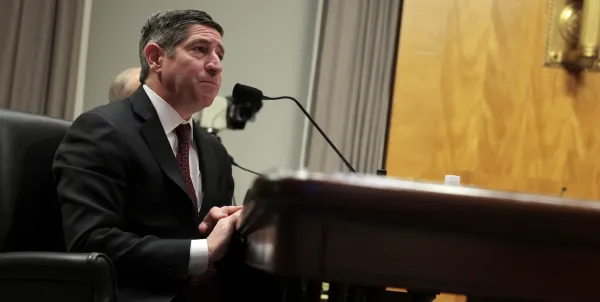IRS should bring back Technology Retirement Office, watchdog says

The IRS should consider resurrecting an office it shuttered last year to better manage the decommissioning of its legacy IT systems, the Treasury Inspector General for Tax Administration recommended in a report last week.
In January 2023, the tax agency sunsetted its Technology Retirement Office, which was established in August 2021 to “strategically reduce the information technology footprint across the enterprise,” according to the report.
Without that office or something akin to it, the IRS lacks an agency-wide program to effectively “identify, prioritize, and execute the updating, replacing, or retiring of legacy systems,” a project that should be a top of mind given that agency spending on operations and maintenance of IT infrastructure jumped 35% over the course of four years, from $2 billion in fiscal year 2019 to $2.7 billion in FY2023, the report explains. That uptick “will likely continue” until most of the IRS’s legacy systems are decommissioned, TIGTA said.
The watchdog recommended that the IRS’s chief information officer either re-establish the Technology Retirement Office or create “a similar enterprise-wide program” to oversee the decommissioning of legacy IT systems. The IRS agreed in part with the recommendation, telling TIGTA that it will produce a roadmap that charts “milestones toward delivering new capabilities” and continue its work on the removal of legacy systems “as new capabilities become available.”
TIGTA also recommended that the IRS properly apply its definition of “legacy system” and make sure that that term is programmed into queries to effectively pinpoint all such systems. The tax agency agreed with the recommendation and said it would update the query definition that is currently programmed.
The IRS was credited by TIGTA in its report for “fully and effectively” implementing two previous recommendations:
“The IRS implemented a policy requiring system information updates to the As-Built Architecture. System information was updated within a year of our review for 732 of 733 systems and the remaining system was updated just over one year of our review,” the report said. “In addition, specific system information in the As-Built Architecture is complete. All 733 systems in the As-Built Architecture had the required information on the managing organization(s), application age, and programming language.”
In a mid-year report to Congress in June, Erin Collins, the national taxpayer advocate, wrote that the IRS has “turned a corner” in its yearslong journey to modernize IT systems and improve customer service.
“Many of the IRS’s plans to improve transparency rely on updating the agency’s technology,” Collins wrote. “As the IRS’s modernization of technology involves the implementation of artificial intelligence (AI), such as in existing voicebots and chatbots, the IRS must remain transparent about its use of AI, particularly as those uses affect taxpayer rights and data privacy.”






